Investigations on the Band-Gap Characteristics of Variable Cross-Section Periodic Structure Support Made of Acrylonitrile-Butadiene-Styrene
Abstract
:1. Introduction
2. Theoretical Analysis of Periodic Structure Vibration Band Gap
3. Experimental Program of Band Gap Measurement of Periodic Structure
3.1. Design and Manufacture of Specimens
3.2. Experimental Program with Hammer Excitation
3.3. Experimental Program with Exciter Excitation
3.4. Stiffness Experiment of Periodic Structure Support
4. Simulation Analysis of Mechanical Properties and Band Gap Characteristics of Bracing Seat with Periodic Structure
4.1. Finite Element Modeling of Periodic Structure Support
4.2. Simulation Parameter Settings
5. Results and Discussion
5.1. Simulation Results of Periodic Structural Support
5.2. Hammer Excitation Experimental Results
5.3. Exciter Excitation Experimental Results
5.4. Comparison of Simulation and Experimental Results
6. Conclusions
- (1)
- A geometrically discontinuous periodic structure was designed, with a single-material variable section. Through 3D printing technology, this periodic structure support was fabricated using ABS.
- (2)
- The finite element model of the periodic support was established, its stiffness and band gap characteristics were simulated; and the displacement load curve and the range of the band gap for the periodic support were obtained.
- (3)
- The vibration experiment was carried out on the specimens using hammer excitation, and the band gap range of the periodic structure support was obtained. In the band gap range, the periodic structure support showed more obvious vibration attenuation than the straight-tube structure support, and the maximum attenuation reached more than 35 dB. The bandwidth error between the hammer excitation vibration experiment and simulation was 26.1%, and the bandgap center error was 17.5%. The vibration isolation performance of the obtained periodic structure bandgap was verified by using a vibration exciter in the range of 1 Hz to 3200 Hz.
- (4)
- At present, this paper verifies that the periodic structure is applied to the design of the support structure, and that the vibration isolation of the support can be realized by using the band gap characteristic. This conclusion can be extended to the design of various support structures. In future work, the factors affecting the band gap of this structure will be explored, including the size and number of periodic structures, and their material qualities.
Author Contributions
Funding
Institutional Review Board Statement
Informed Consent Statement
Data Availability Statement
Conflicts of Interest
References
- Gopalakrishnan, S.; Mahapatra, D.R. Active control of structure-borne noise in helicopter cabin transmitted through gearbox support strut. In IUTAM Symposium on Designing for Quietness; Springer: Dordrecht, The Netherlands, 2002; pp. 99–128. [Google Scholar]
- Wang, F.; Lu, Y.; Lee, H.P.; Yue, H. A novel periodic mono-material strut with geometrical discontinuity for helicopter cabin noise reduction. Aerosp. Sci. Technol. 2020, 105, 105985. [Google Scholar] [CrossRef]
- Hoffmann, F.; Maier, R.; Jänker, P.; Hermle, F.; Berthe, A. Helicopter interior noise reduction by using active gearbox struts. In Proceedings of the 12th AIAA/CEAS Aeroacoustics Conference (27th AIAA Aeroacoustics Conference), Cambridge, MA, USA, 8–10 May 2006; p. 2604. [Google Scholar]
- Simon, F.; Haase, T.; Unruh, O.; Pohl, M.; Tijs, E.; Wijntjes, R.; Van Der Wal, H.; Ghiringhelli, G. Activities of European Research Laboratories Regarding Helicopter Internal Noise; AerospaceLab: Mont-Saint-Guibert, Belgium, 2014; pp. 1–14. [Google Scholar]
- Ma, X.; Lu, Y.; Wang, F. Active structural acoustic control of helicopter interior multifrequency noise using input-output-based hybrid control. J. Sound Vib. 2017, 405, 187–207. [Google Scholar] [CrossRef]
- Wang, L.; Wang, X.; Yang, Y.; Li, Y.; Chang, X. Active force control of structure-borne sound based on robust optimization subjected to an irregular cavity with uncertainties. Aerosp. Sci. Technol. 2018, 73, 318–331. [Google Scholar] [CrossRef]
- Lang, K.; Xia, P. Hybrid active vibration control of helicopter fuselage driven by piezoelectric stack actuators. J. Aircr. 2019, 56, 719–729. [Google Scholar] [CrossRef]
- Kim, B.; Washington, G.N.; Singh, R. Design and analysis of supporting structure with smart struts for active vibration isolation. In Proceedings of the Conference on Industrial and Commercial Applications of Smart Structures Technologies, San Diego, CA, USA, 8–9 March 2020; Spie-Int Soc Optical Engineering: Bellingham, WA, USA, 2010. [Google Scholar]
- Hussein, M.I. Dynamics of Banded Materials and Structures: Analysis, Design and Computation in Multiple Scales Doctor; University of Michigan: Ann Arbor, MI, USA, 2004. [Google Scholar]
- Leon, B. Wave Propagation in Periodic Structures, 2nd ed.; Dover Pubns: New York, NY, USA, 1946. [Google Scholar]
- Mead, D.J. Free wave propagation in periodically supported, infinite beams. J. Sound Vib. 1970, 11, 181–197. [Google Scholar] [CrossRef]
- Parthan, D. Free wave propagation in two-dimensional periodic plates. J. Sound Vib. 1979, 64, 325–348. [Google Scholar]
- Mangaraju, V.; Sonti, V.R. Wave attenuation in periodic three-layered beams: Analytical and FEM study. J. Sound Vib. 2004, 276, 541–570. [Google Scholar] [CrossRef]
- Zhou, X.; Yu, D.; Shao, X.; Wang, S.; Zhang, S. Simplified-super-element-method for analyzing free flexural vibration characteristics of periodically stiffened-thin-plate filled with viscoelastic damping material. Thin-Walled Struct. 2015, 94, 234–252. [Google Scholar] [CrossRef]
- Ozkaya, E.; Yilmaz, C. Effect of eddy current damping on phononic band gaps generated by locally resonant periodic structures. J. Sound Vib. 2017, 389, 250–265. [Google Scholar] [CrossRef]
- Hajhosseini, M.; Mahdian Parrany, A. A new periodic beam-like structure with special vibration-isolation characteristics. Mech. Adv. Mater. Struct. 2021, 267, 1–12. [Google Scholar] [CrossRef]
- Zhang, Z.; Li, T.; Wang, Z.; Tang, Y. Band gap characteristics of flexural wave of two-dimensional periodic frame structure composed of locally resonant composite beam. Mech. Syst. Signal Process. 2019, 131, 364–380. [Google Scholar] [CrossRef]
- Barys, M.; Jensen, J.S.; Frandsen, N.M. Efficient attenuation of beam vibrations by inertial amplification. Eur. J. Mech.-A/Solids 2018, 71, 245–257. [Google Scholar] [CrossRef] [Green Version]
- Gao, F.; Wu, Z.; Li, F.; Zhang, C. Numerical and experimental analysis of the vibration and band-gap properties of elastic beams with periodically variable cross sections. Waves Random Complex Media 2019, 29, 299–316. [Google Scholar] [CrossRef]
- Banerjee, A.; Adhikari, S.; Hussein, M.I. Inertial amplification band-gap generation by coupling a levered mass with a locally resonant mass. Int. J. Mech. Sci. 2021, 207, 106630. [Google Scholar] [CrossRef]
- Duhamel, D.; Mencik, J.-M. Time response analysis of periodic structures via wave-based absorbing boundary conditions. Eur. J. Mech.-A/Solids 2022, 91, 104418. [Google Scholar] [CrossRef]
- Szefi, J.T. Helicopter Gearbox Isolation Using Periodically Layered Fluidic Isolators; The Pennsylvania State University: State College, PA, USA, 2003. [Google Scholar]
- Asiri, S.; Baz, A.; Pines, D. Periodic struts for gearbox support system. J. Vib. Control 2005, 11, 709–721. [Google Scholar] [CrossRef]
- Lu, Y.; Wang, F.J.; Ma, X.J. Research on the Vibration Characteristics of a Compounded Periodic Strut Used for Helicopter Cabin Noise Reduction. Shock Vib. 2017, 2017, 4895026. [Google Scholar] [CrossRef] [Green Version]
- Lu, Y.; Wang, F.; Ma, X. Helicopter interior noise reduction using compounded periodic struts. J. Sound Vib. 2018, 435, 264–280. [Google Scholar] [CrossRef]
- Wang, F.; Lu, Y.; Lee, H.P.; Ma, X. Vibration and noise attenuation performance of compounded periodic struts for helicopter gearbox system. J. Sound Vib. 2019, 458, 407–425. [Google Scholar] [CrossRef]
- Wang, F.J.; Torbati, M.M.; Ma, X.J.; Lu, Y. Design of Near-Periodic Struts for Helicopter Gearbox Vibration Isolation Using Multicell Optimization. AIAA J. 2019, 57, 2634–2647. [Google Scholar] [CrossRef]
- Fang, J.; Lu, D. Solid State Physics; Science and Technology Press: Shanghai, China, 1980. [Google Scholar]
- Jihong, W. Vibration Attenuationand Band GaP Charaeteristies of Phononie Cyrstals Doctor; National University of Defense Technology: Changsha, China, 2005. [Google Scholar]
- Aliakbari, K.; Nejad, R.M.; Mamaghani, T.A.; Pouryamout, P.; Asiabaraki, H.R. Failure analysis of ductile iron crankshaft in compact pickup truck diesel engine. Structures 2022, 36, 482–492. [Google Scholar] [CrossRef]
- Masoudi Nejad, R.; Noroozian Rizi, P.; Zoei, M.S.; Aliakbari, K.; Ghasemi, H. Failure Analysis of a Working Roll Under the Influence of the Stress Field Due to Hot Rolling Process. J. Fail. Anal. Prev. 2021, 21, 870–879. [Google Scholar] [CrossRef]
- Mukai, W. Research on Vibration Isolation Characteristics of The Helicopter Main Gearbox Support Strut; Master of Engineering Harbin Institute of Technology: Harbin, China, 2015. [Google Scholar]
- Wei, Z.-D.; Li, B.-R.; Du, J.-M.; Yang, G. Theoretical and experimental investigation of flexural vibration transfer properties of high-pressure periodic pipe. Chin. Phys. Lett. 2016, 33, 044303. [Google Scholar] [CrossRef]
- Wei, L.; Qiuyi, L.; Shijie, Z.; Shangfu, Y. Experimental study on the vibration reduction performance of damper fastener used in Wenzhou suburban railway line S1. Railw. Stand. Des. 2022, 66, 73–77. [Google Scholar] [CrossRef]

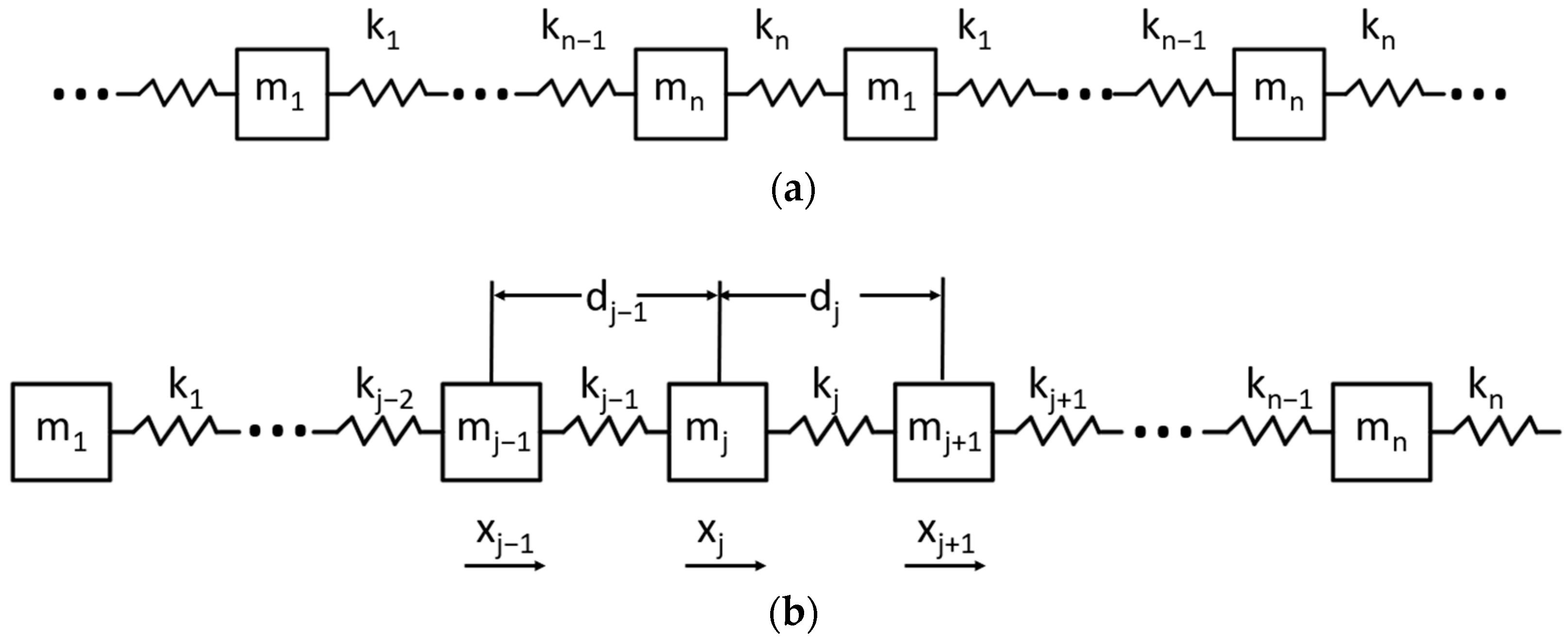

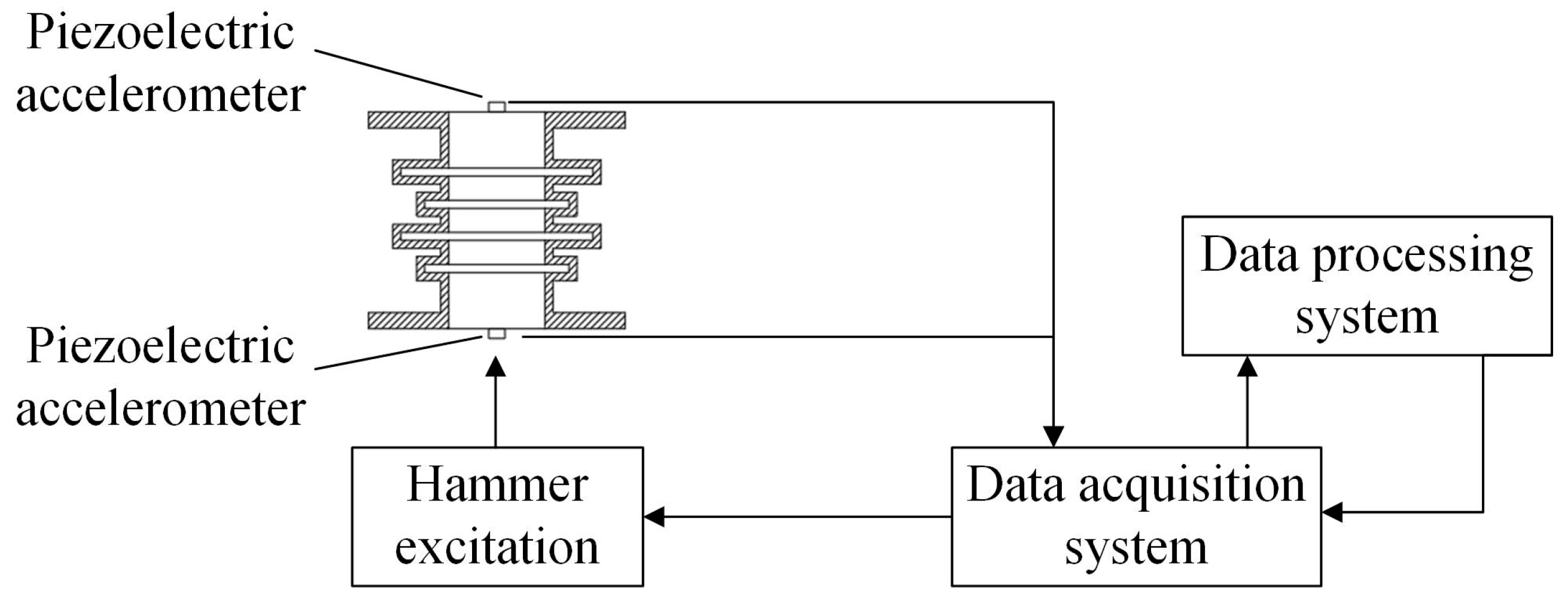
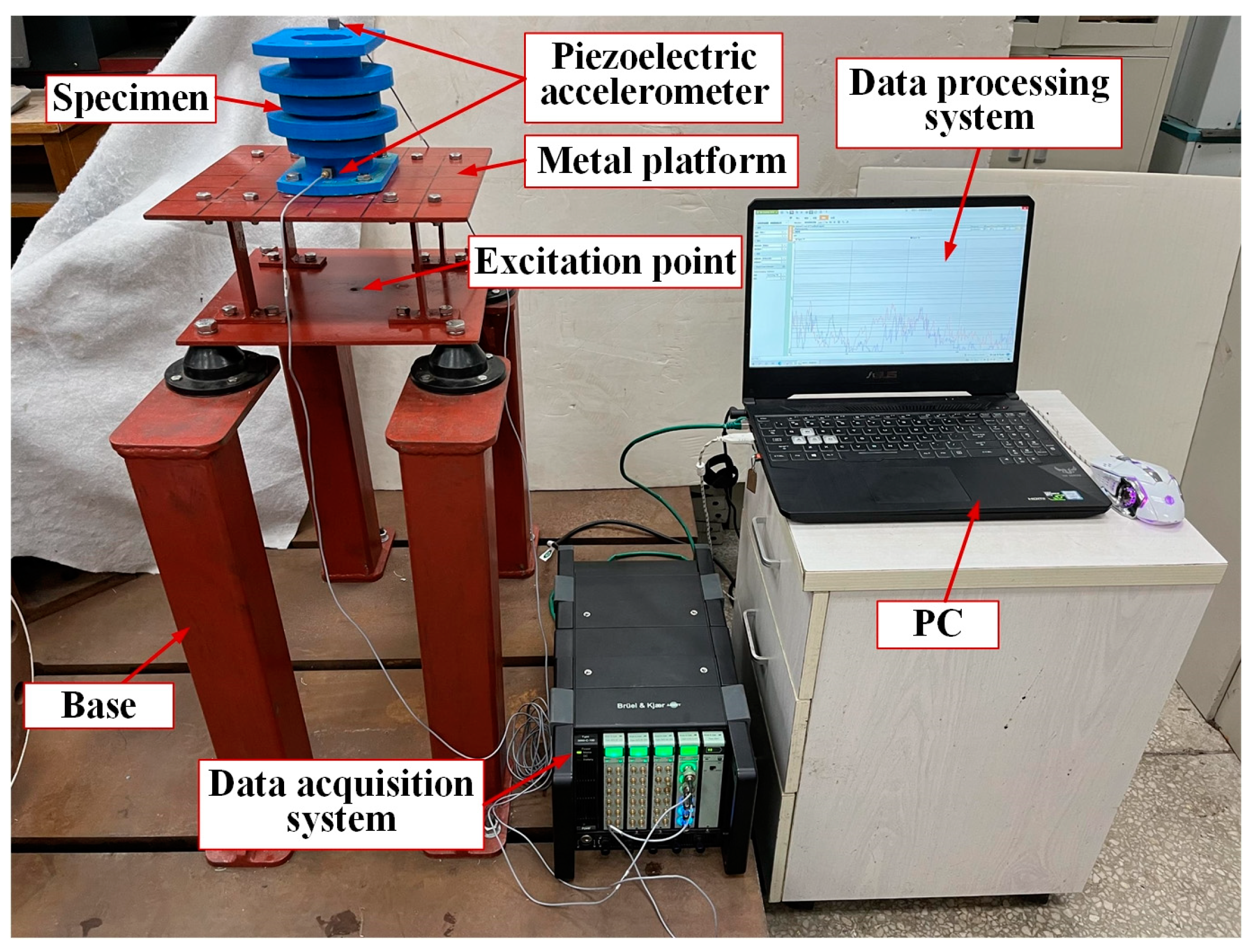



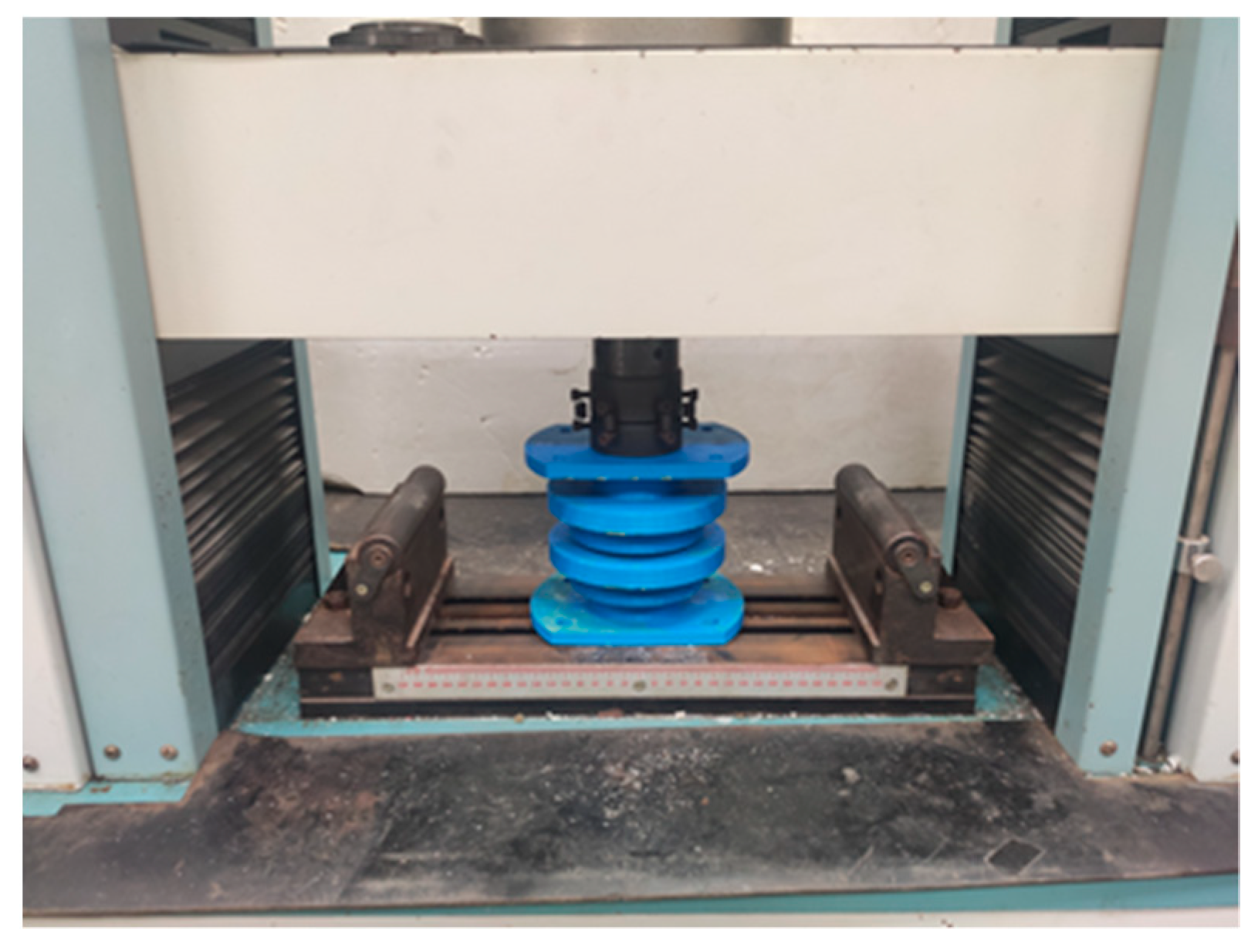
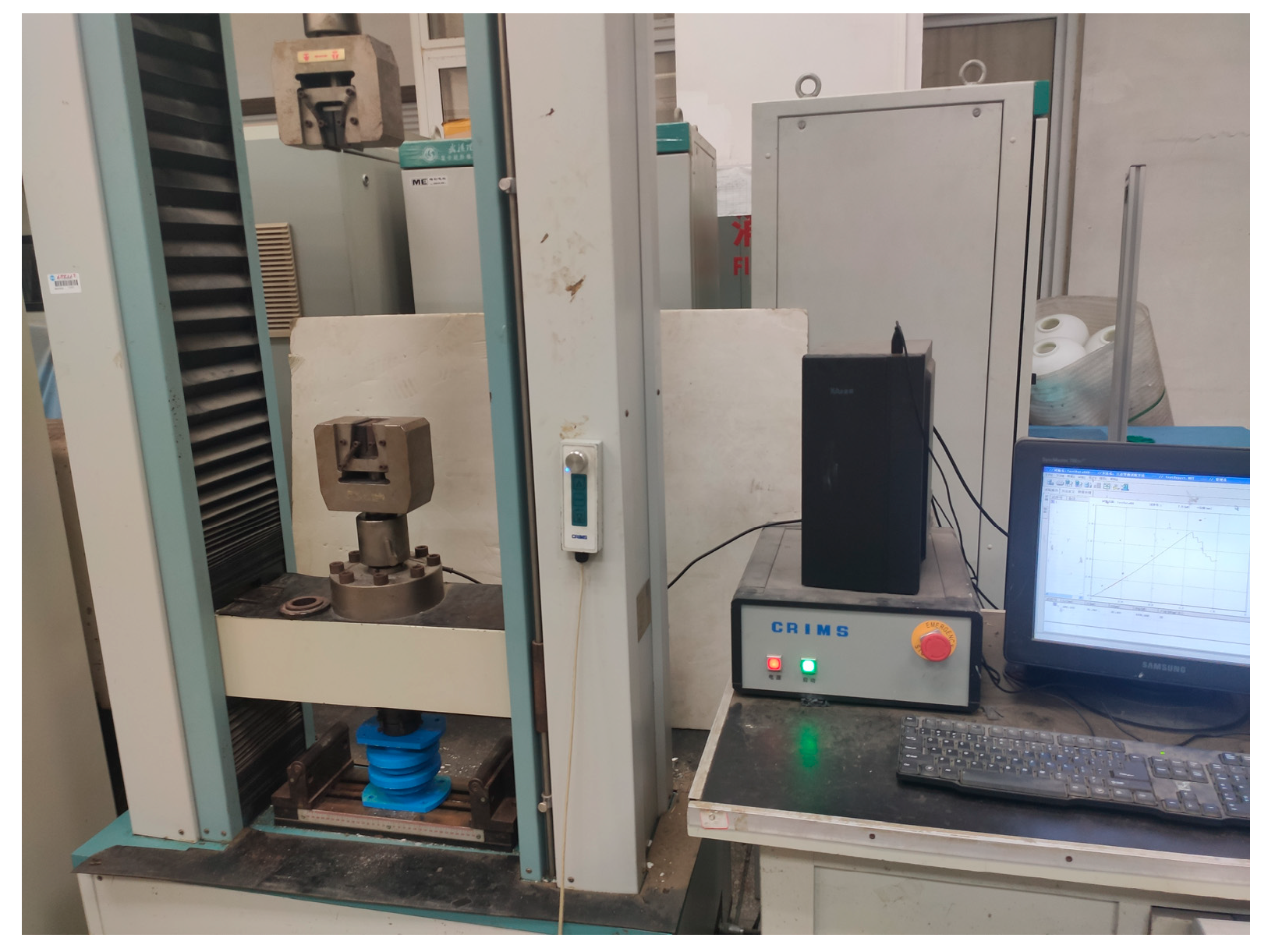
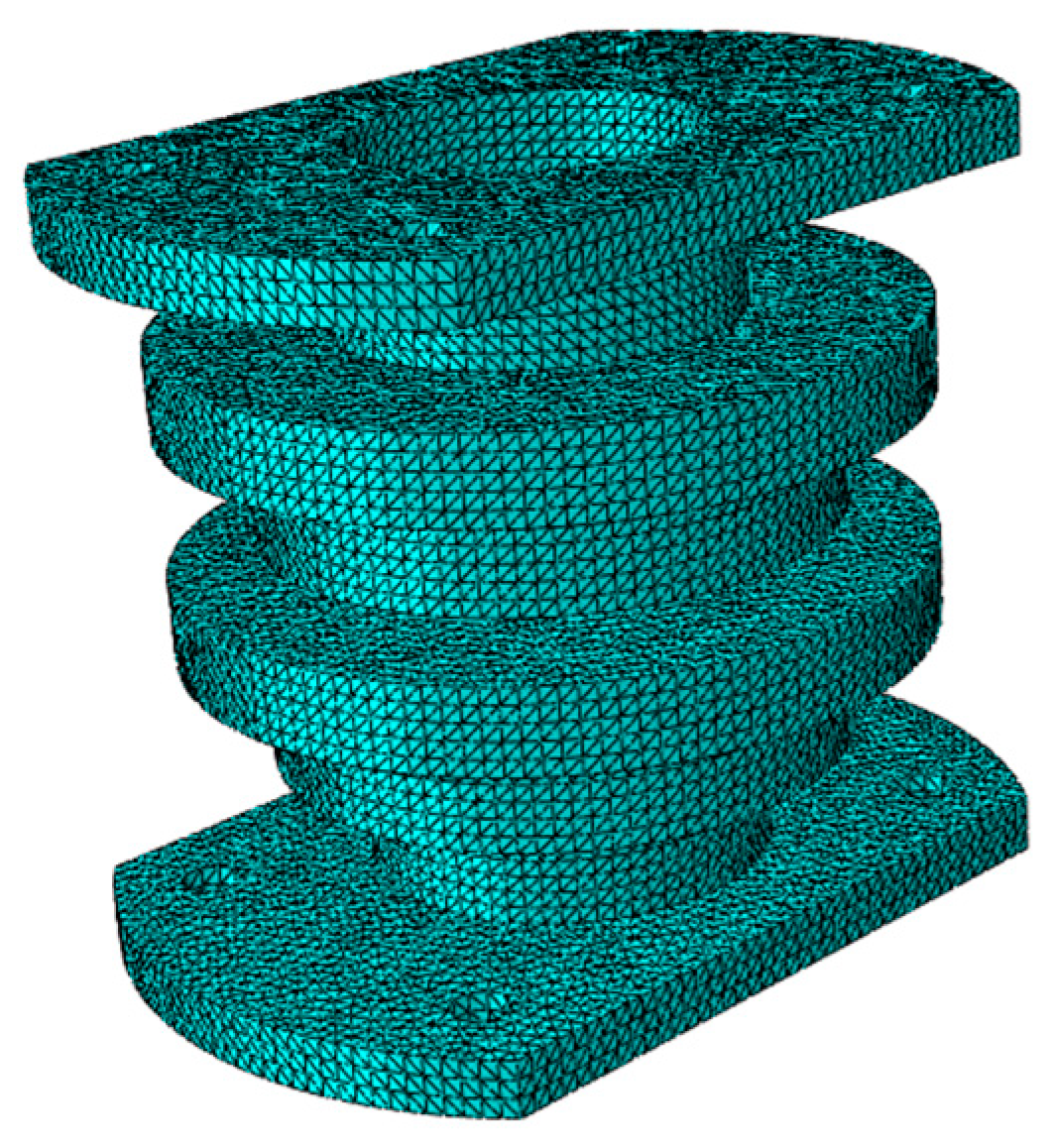
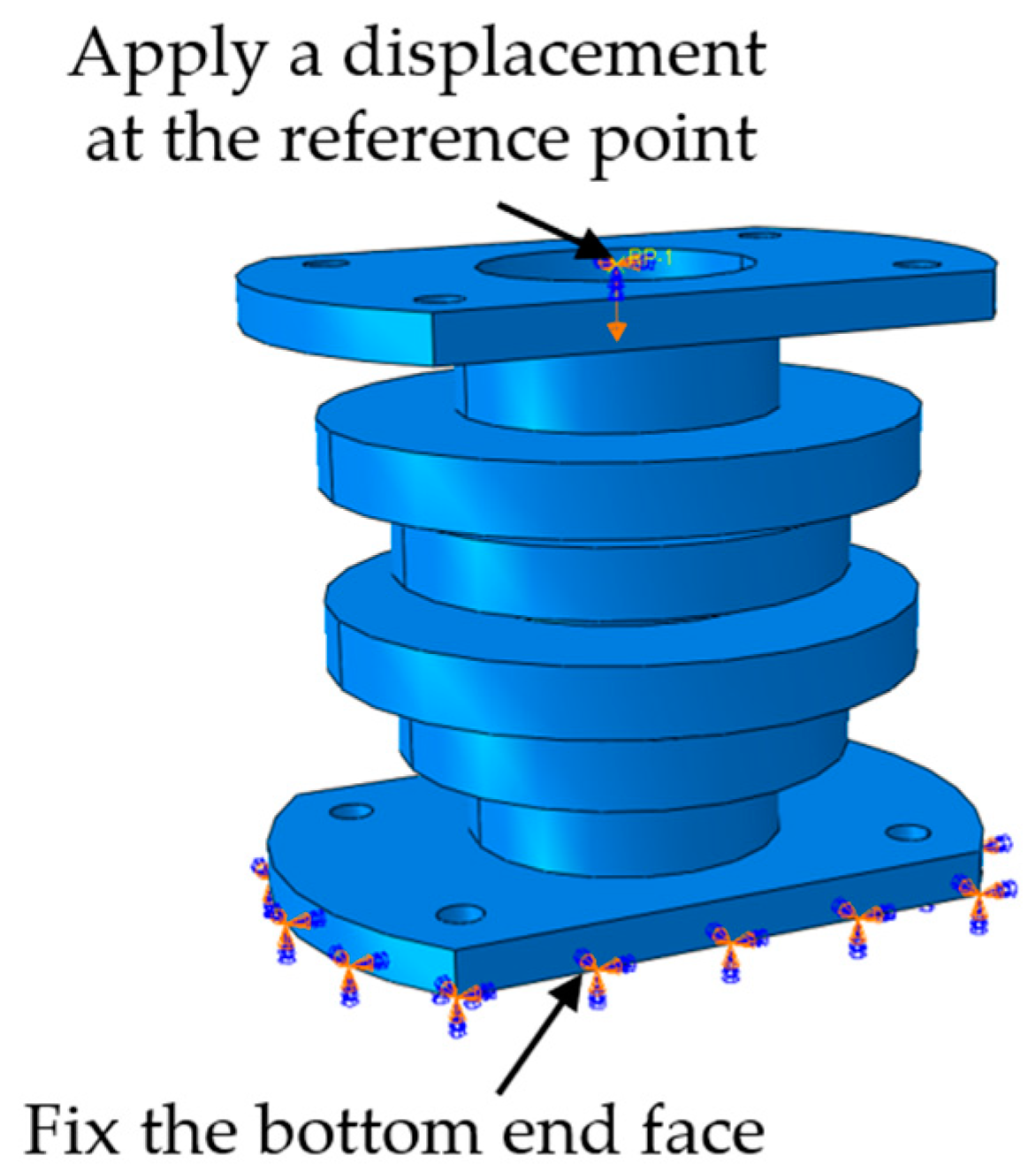
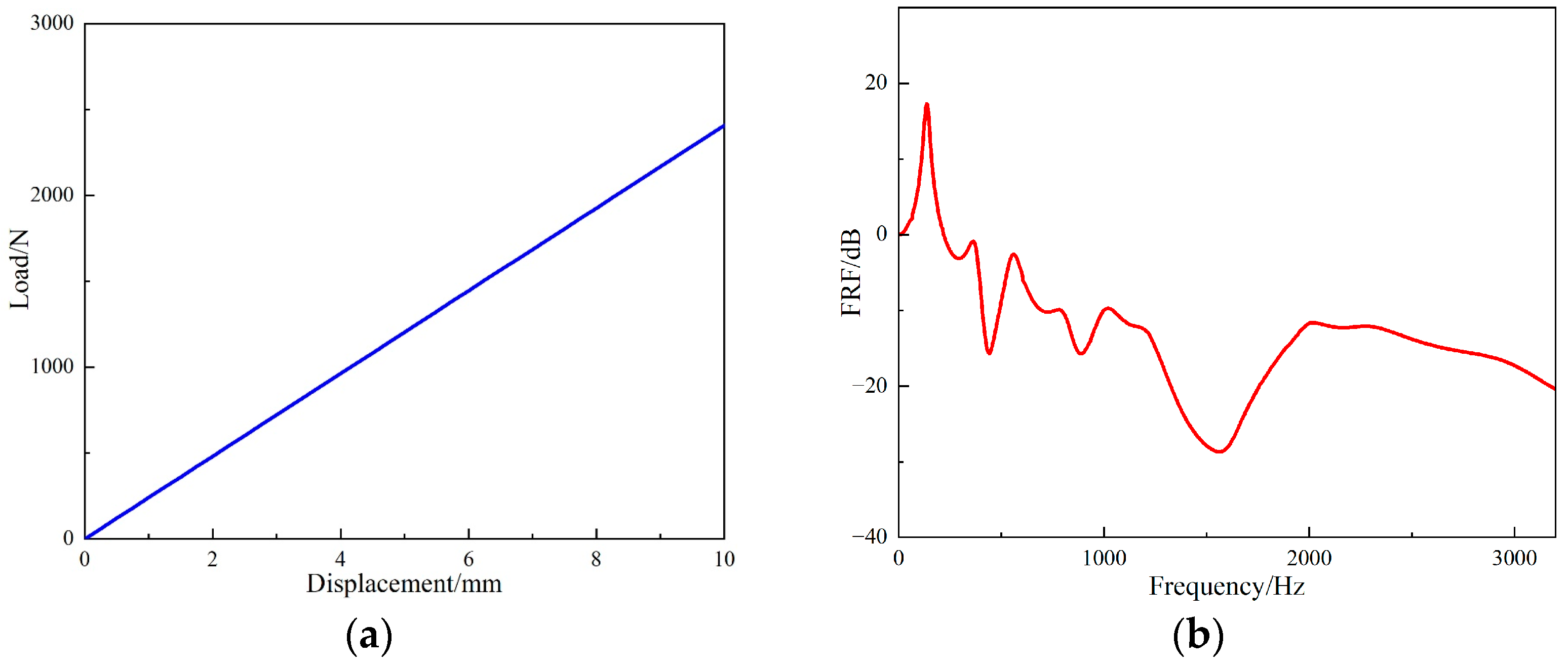
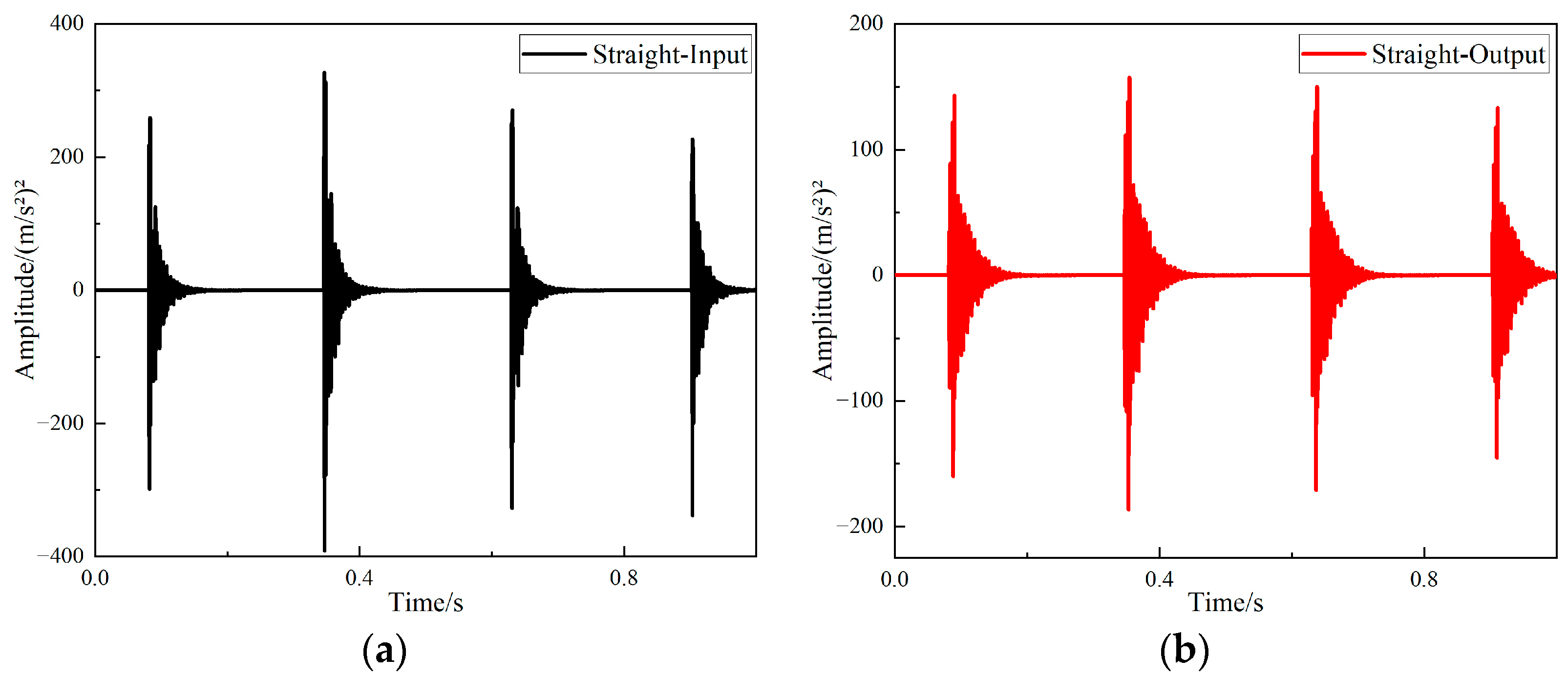
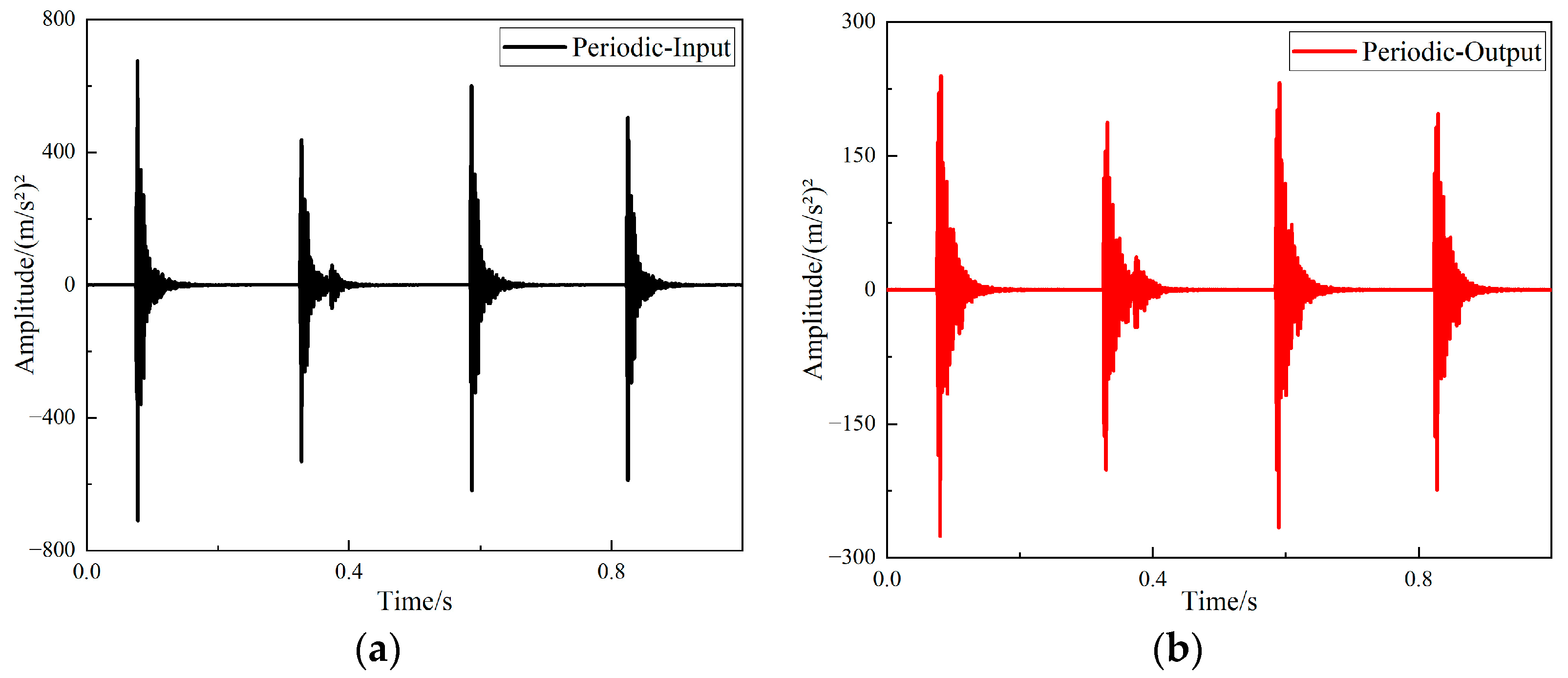
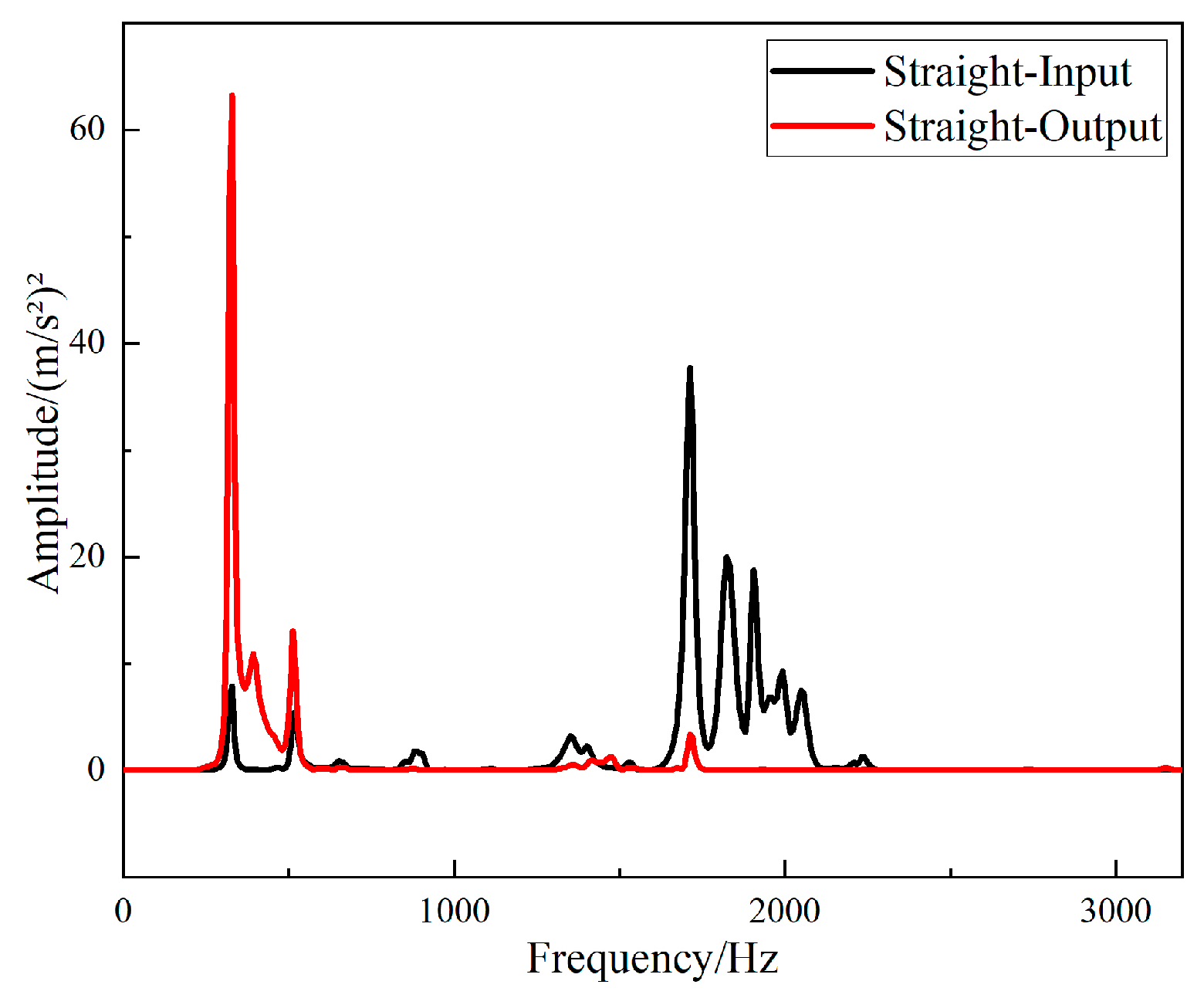

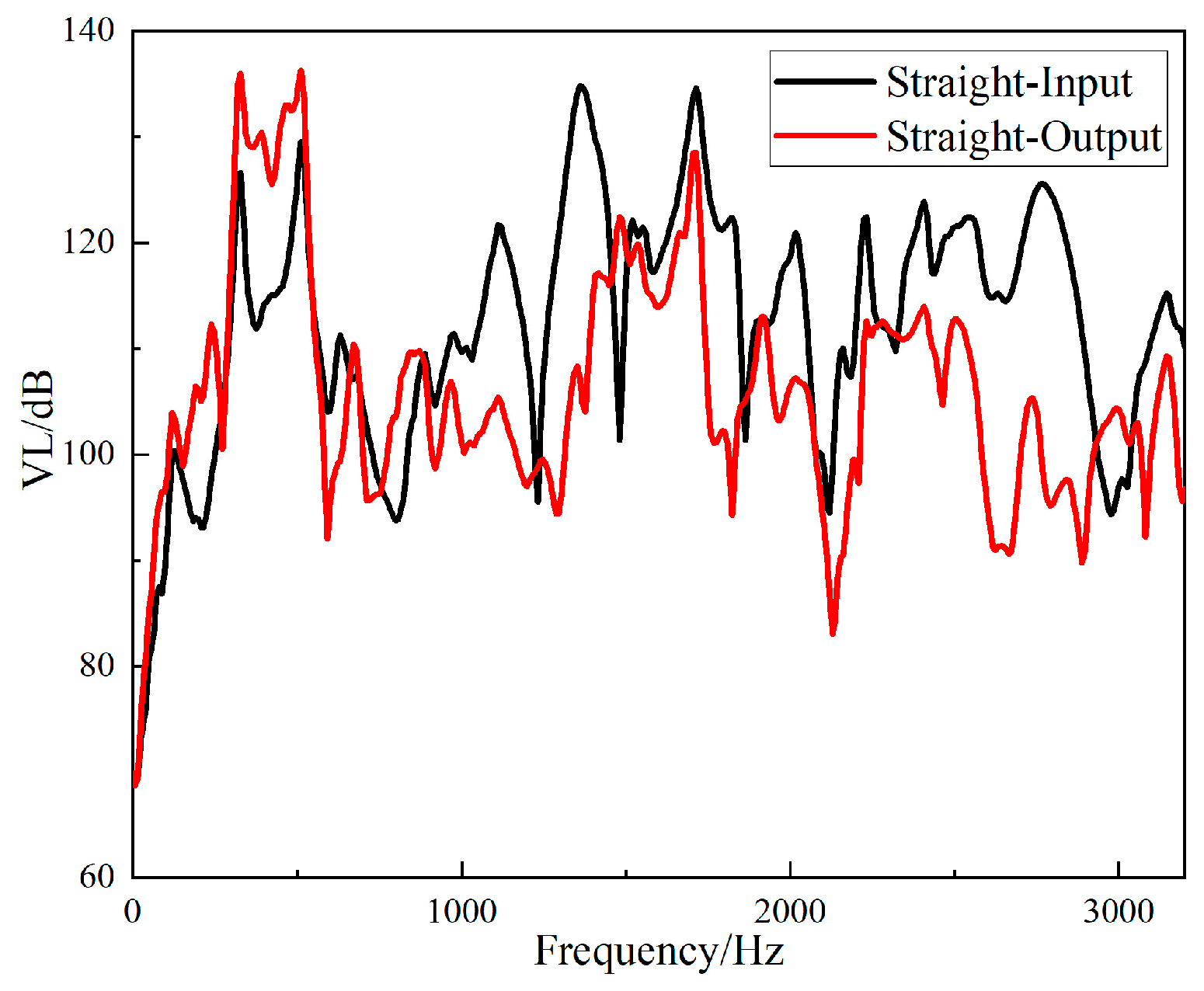
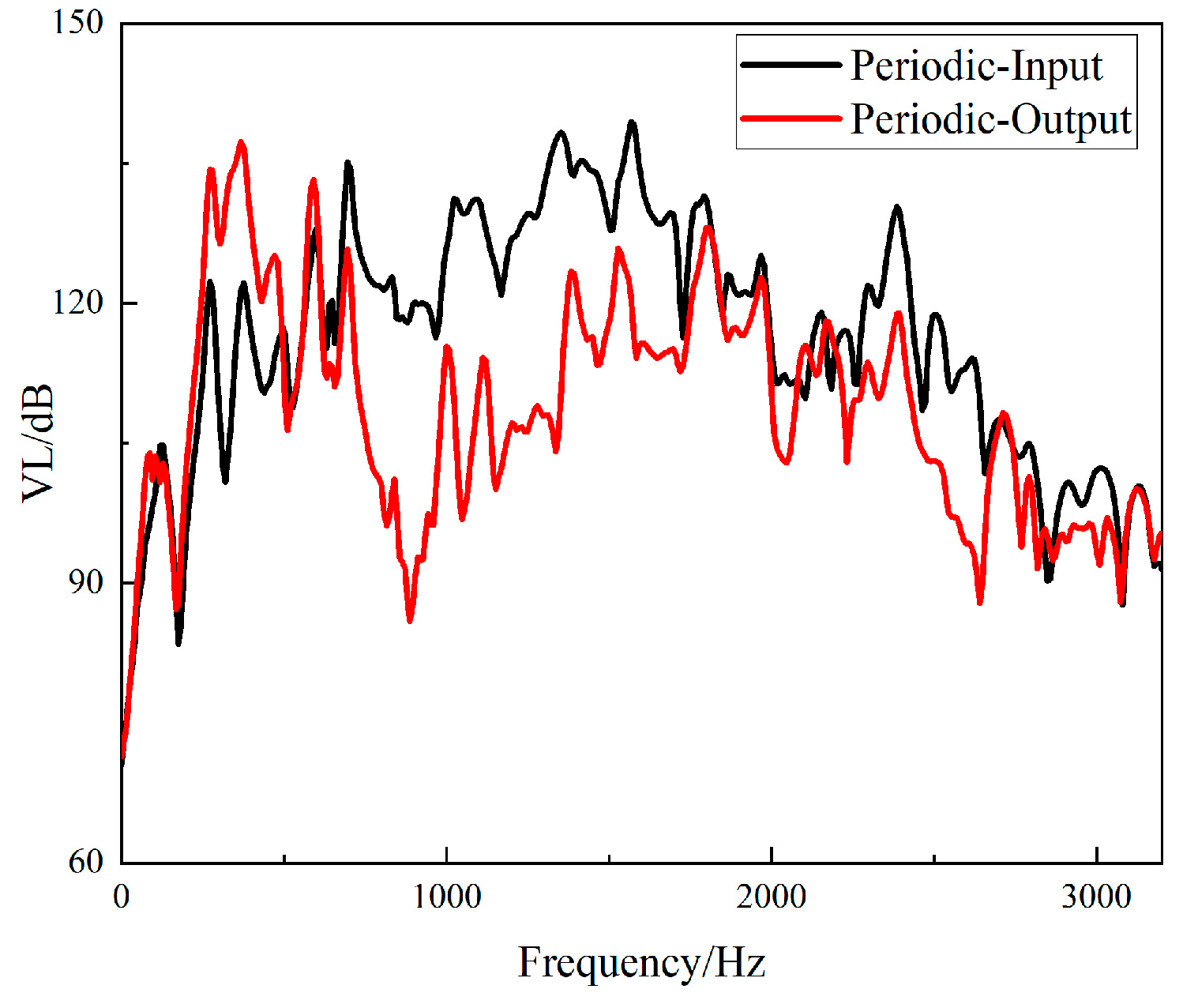
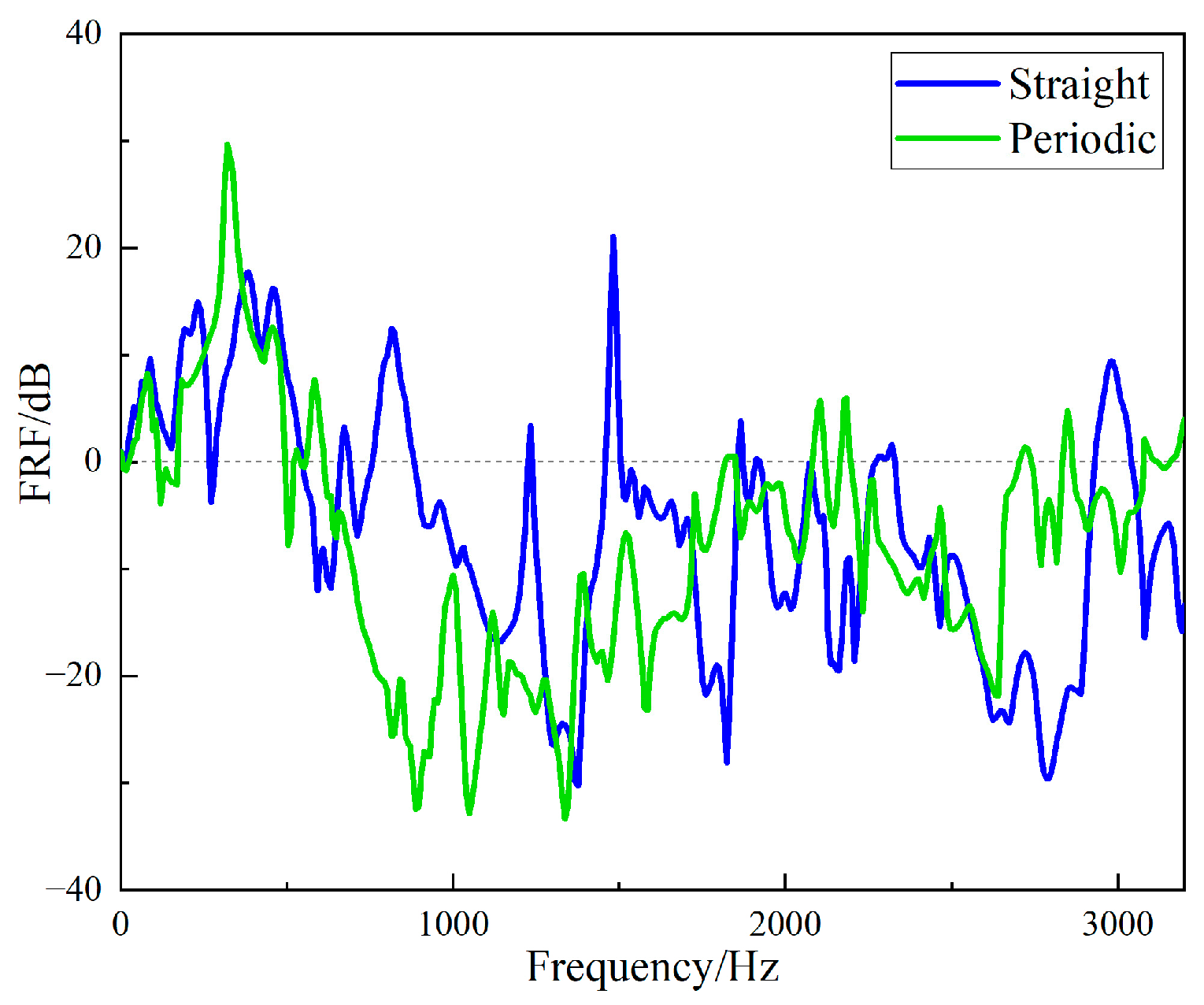
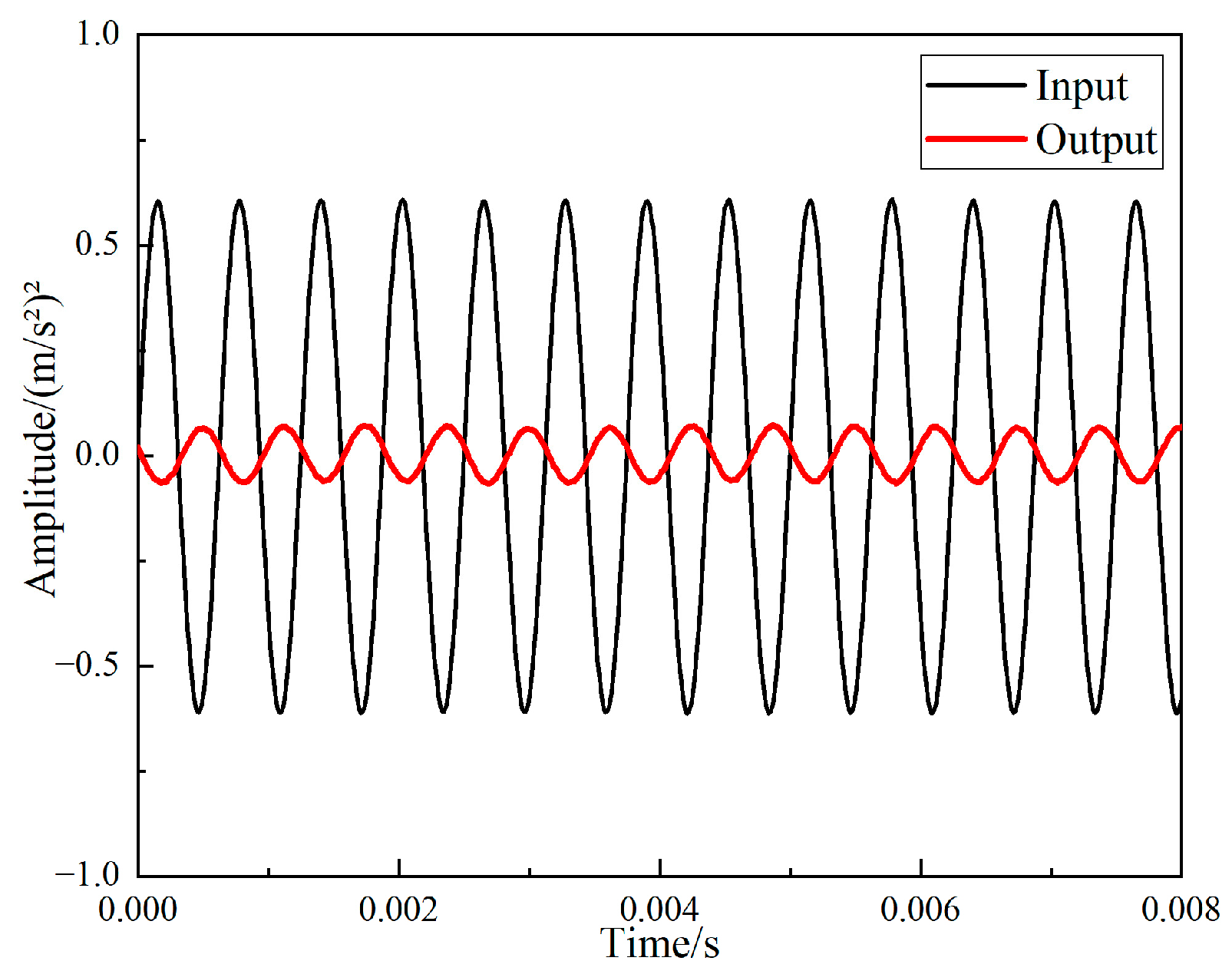
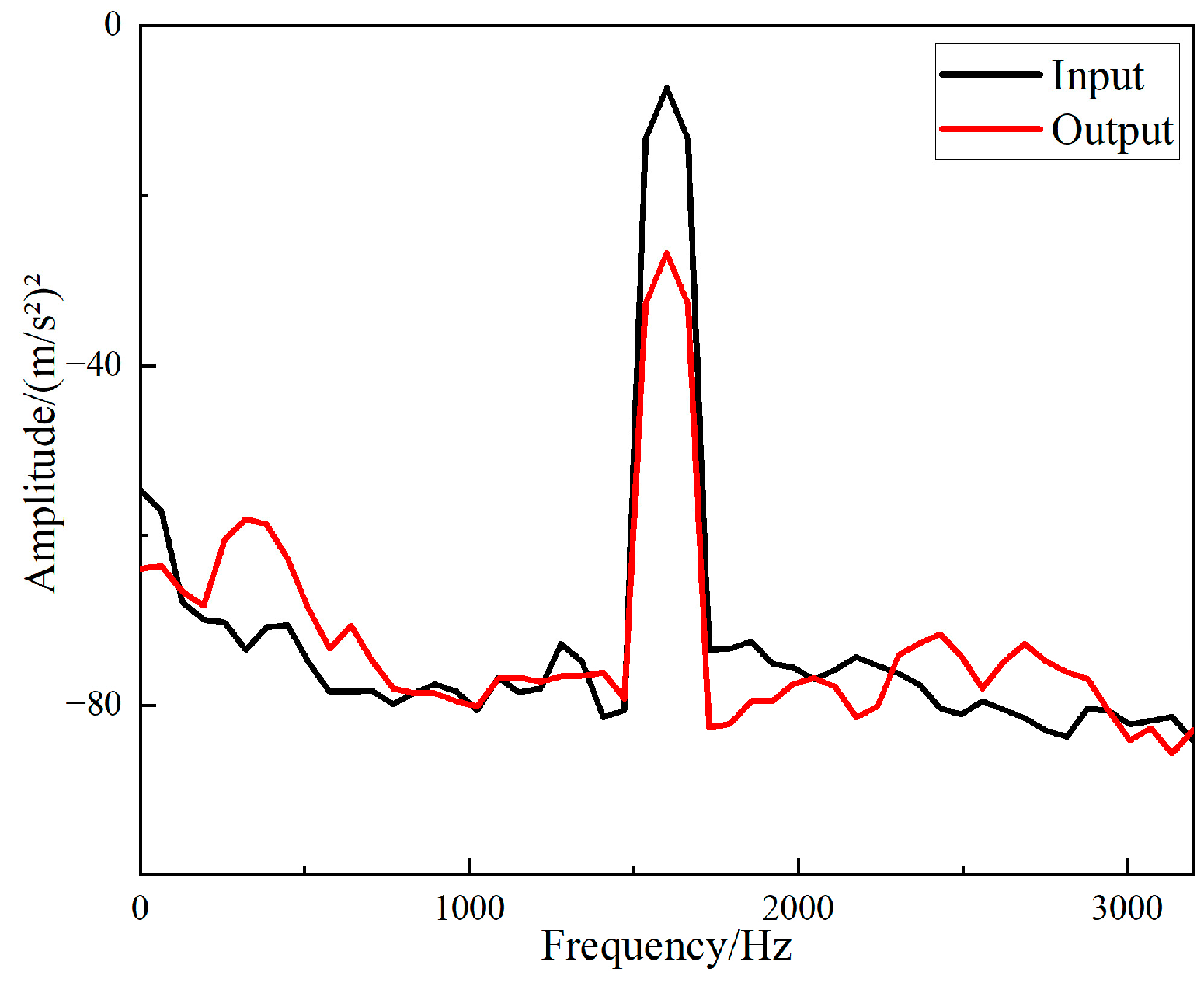




| Material | Young’s Modulus (MPa) | Poisson’s Ratio | Density (g/cm3) |
|---|---|---|---|
| Acrylonitrile-butadiene-styrene | 1098 | 0.33 | 1.13 |
| Equipment | Model | Parameters |
|---|---|---|
| Piezoelectric accelerometer | 4507Bx | 9.688 mV/(m/s2) |
| Force hammer (Force sensor) | 8206-002 | 2.27 mV/N |
| Data acquisition system | 3660-C-LAN-XI | - |
| Analyzing software | BK Connect | - |
Publisher’s Note: MDPI stays neutral with regard to jurisdictional claims in published maps and institutional affiliations. |
© 2022 by the authors. Licensee MDPI, Basel, Switzerland. This article is an open access article distributed under the terms and conditions of the Creative Commons Attribution (CC BY) license (https://creativecommons.org/licenses/by/4.0/).
Share and Cite
Zhang, J.; Xia, X.; Wen, X.; Zang, M.; Dou, Y. Investigations on the Band-Gap Characteristics of Variable Cross-Section Periodic Structure Support Made of Acrylonitrile-Butadiene-Styrene. Materials 2022, 15, 4308. https://doi.org/10.3390/ma15124308
Zhang J, Xia X, Wen X, Zang M, Dou Y. Investigations on the Band-Gap Characteristics of Variable Cross-Section Periodic Structure Support Made of Acrylonitrile-Butadiene-Styrene. Materials. 2022; 15(12):4308. https://doi.org/10.3390/ma15124308
Chicago/Turabian StyleZhang, Jinguang, Xu Xia, Xianglong Wen, Meng Zang, and Yukuan Dou. 2022. "Investigations on the Band-Gap Characteristics of Variable Cross-Section Periodic Structure Support Made of Acrylonitrile-Butadiene-Styrene" Materials 15, no. 12: 4308. https://doi.org/10.3390/ma15124308
APA StyleZhang, J., Xia, X., Wen, X., Zang, M., & Dou, Y. (2022). Investigations on the Band-Gap Characteristics of Variable Cross-Section Periodic Structure Support Made of Acrylonitrile-Butadiene-Styrene. Materials, 15(12), 4308. https://doi.org/10.3390/ma15124308






